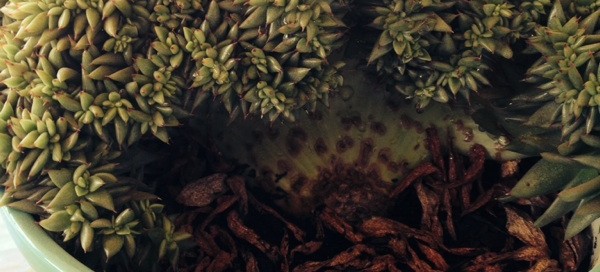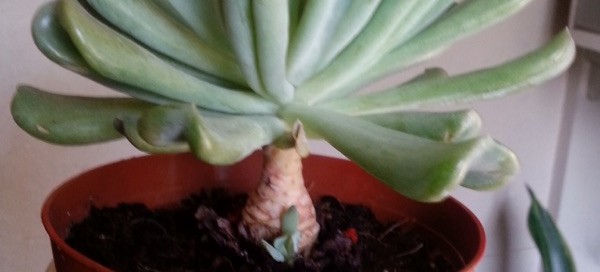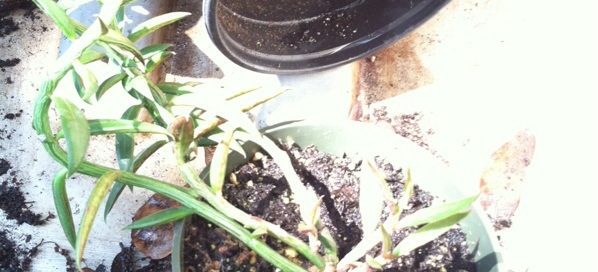Crested Succulent
You definitely have a succulent that is growing in what is called a "cristate" or crested form. this happens when the original plant sustains some damage to the normal, single growing point and causes it to make multiple growing points. These all push against each other and cause the wavy, fan shape. It also doesn't allow the plant to grow in its normal form of a single rosette so that's why we can't give a definitive I.D., just a guess that it is likely a variety of echeveria. Sometimes it will throw out a plant that has reverted to normal - it looks like that might be the case off the right side of the photo but we can't see it. This will help identify the plant. For care I would carefully unpot it and add some soil to the bottom of the pot so you can re-pot it up at a higher level. This will give more air circulation around the base where it can often develop a rot problem, and clean out all the old dead leaves on the soil - they can cause a fungal problem. Otherwise it looks like you have been doing everything quite well. It does look like the soil may be a bit wet and you don't want that for any length of time. When you water, water well, but don't water again until the soil has started to dry out to about your first knuckle on your finger. keep it in the brightest location possible, even a little sun.


